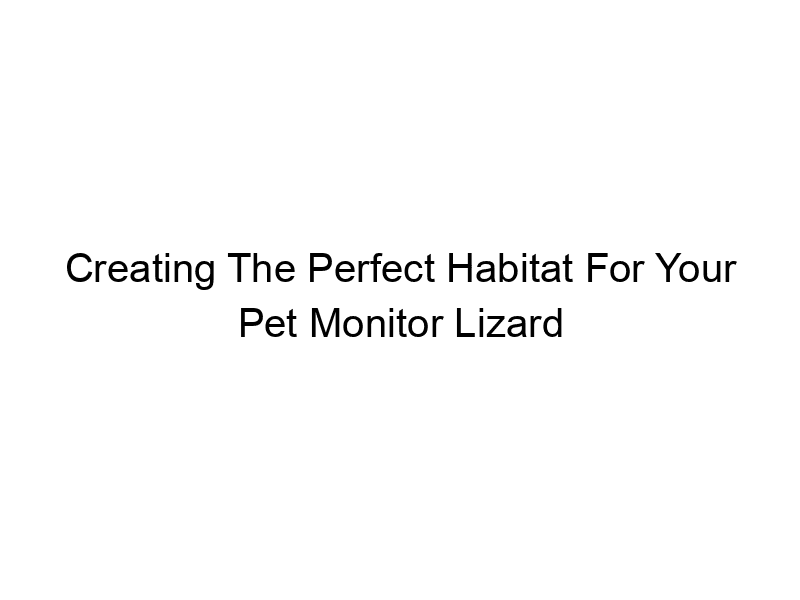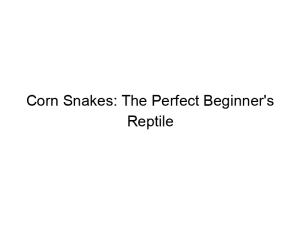Bringing a monitor lizard into your home is a significant commitment. This guide focuses on Understanding the Habitat Requirements of Your Pet Monitor Lizard, covering everything from enclosure size and substrate to lighting, heating, and enrichment. We’ll explore the specific needs of different monitor lizard species, common mistakes to avoid, and how to create a thriving environment for your scaly companion. You’ll learn about appropriate temperature gradients, humidity levels, and the vital role of UVB lighting in maintaining your lizard’s health and wellbeing. Let’s dive in!
Monitor lizards are a diverse group, ranging in size from a few inches to over six feet. Species like the Savannah Monitor (Varanus exanthematicus) are relatively common in captivity, while others, such as the Nile Monitor (Varanus niloticus) or various species of arboreal monitors, demand considerably more specialized
care. Understanding your specific species’ needs is paramount. Researching the natural habitat of your chosen monitor lizard is crucial for replicating those conditions in captivity.
Enclosure Size and Type: Choosing the Right Home
The size of your enclosure is directly proportional to the adult size of your monitor lizard. A small species like the Ackie Monitor might thrive in a relatively modest enclosure, while a large species such as a Nile Monitor will require an enormous space. Materials for the enclosure vary. Glass terrariums are popular for their ease of cleaning, but screen enclosures provide better ventilation, which can be essential for maintaining optimal humidity levels. Consider building a custom enclosure for ultimate control and size flexibility.
Substrate Selection: Comfort and Hygiene
The substrate, or bottom material of your enclosure, plays a crucial role in maintaining humidity and providing a suitable environment for your lizard. Reptile carpet is popular for ease of cleaning, but paper towels are also a good, hygienic option for juvenile lizards. Avoid substrates that are easily ingested, like sand, as this can cause impaction.
Temperature and Humidity: The Vital Balance
Monitor lizards are ectothermic, meaning they rely on external sources to regulate their body temperature. Providing a proper thermal gradient within the enclosure is vital. This means having areas of varying temperatures, allowing your lizard to choose its preferred basking spot (warmer) and cooler areas for resting. Humidity levels vary by species, but most need a moderately humid environment. A hygrometer is essential for monitoring humidity levels.
Heating Systems: Basking Lamps and Under-Tank Heaters
Several heating methods are available, including basking lamps (providing warmth through direct radiation) and under-tank heaters (providing background heat). A combination is often best, creating a gradient across the enclosure. Always monitor temperatures regularly with accurate thermometers.
Lighting: The Importance of UVB
UVB lighting is crucial for monitor lizards. UVB radiation aids in calcium absorption and prevents metabolic bone disease (MBD). A high-quality UVB bulb, suitable for reptiles, must be replaced every 6-12 months regardless of usage, as its UVB output decreases over time. The distance between the bulb and the basking spot significantly impacts UVB intensity.
Water and Hydration: Maintaining Water Supply
Providing access to clean, fresh water is fundamental. A large, shallow water bowl is necessary, allowing the lizard to soak and drink. Water should be changed daily or as needed to prevent bacterial growth. Monitor lizards can also obtain some hydration through their food but a clean water source is vital.
Feeding Your Monitor Lizard: A Balanced Diet
The diet of a monitor lizard depends heavily on its species. Some are primarily insectivores, while others are carnivores or omnivores. A varied diet, simulating their natural prey items is crucial. Prey should be appropriately sized to avoid choking hazards. Providing calcium and vitamin supplements is essential to prevent nutritional deficiencies.
Supplements and Nutrition: Avoiding Deficiencies
Dusting insects with a calcium and vitamin D3 supplement before feeding is a standard practice. Ensure the supplements are specifically formulated for reptiles. The frequency of supplementation will vary depending on the age and species of your monitor lizard, with younger animals generally requiring more frequent supplements.
Enrichment and Stimulation: Keeping Your Lizard Engaged
Providing environmental enrichment is essential for your monitor lizard’s physical and mental health. This includes climbing branches, hiding places, and various textures to explore. Enrichment helps reduce stress and boredom, preventing behavioral problems such as lethargy or aggression.
Hiding Spots and Climbing Structures: Replicating Natural Habitats
Monitor lizards instinctively seek shelter. Providing safe, secure hiding places, such as caves or logs, is crucial for their well-being. Climbing branches provide exercise and simulate their natural arboreal behavior (for arboreal species).
Enclosure Cleaning and Maintenance: Hygiene Practices
Maintaining a clean enclosure is vital to prevent the spread of disease and parasites. Spot clean the enclosure regularly to remove feces and uneaten food. Regular complete disinfection of the entire enclosure is important. Use reptile-safe disinfectants and thoroughly rinse the enclosure before replacing the substrate.
Common Problems and Their Solutions
Several common problems can arise in captive monitor lizard keeping. Metabolic bone disease (MBD) due to inadequate UVB lighting and calcium deficiency is a severe issue. Impaction, caused by the ingestion of inappropriate substrate or insufficient hydration, can also be life-threatening. Regular monitoring of your lizard’s health and behavior is important for early identification of problems.
Choosing the Right Monitor Lizard for You
Before bringing a monitor lizard home, research various species to ensure that you can meet their specific needs. Consider your experience level, the space you have available, and your financial capabilities. Some species are far more demanding than others in terms of enclosure size, environmental control, and dietary requirements.
Understanding Your Lizard’s Behavior
Observe your lizard’s behavior regularly. Changes in appetite, activity levels, or defecation patterns could indicate a health problem. Learning to recognize normal behavior is crucial for identifying potential issues early.
Handling and Interaction: Safe and Responsible Practices
Handle your monitor lizard gently and carefully. Avoid sudden movements or loud noises that might startle it. Always wash your hands thoroughly before and after handling to prevent the transmission of bacteria or parasites. Some species are more docile than others, and proper handling techniques will vary.
Veterinary Care: Access to Experienced Professionals
Find a veterinarian experienced in reptile care. Regular check-ups are essential, especially for younger lizards. Having access to veterinary care in case of an emergency is crucial for the well-being of your monitor lizard.
Frequently Asked Questions
What are the most important factors in creating a suitable habitat for a monitor lizard?
The most crucial factors are providing the correct enclosure size, maintaining appropriate temperature and humidity gradients, supplying adequate UVB lighting, offering a varied and nutritious diet, and ensuring sufficient enrichment and environmental stimulation.
How often should I clean my monitor lizard’s enclosure?
Spot cleaning (removing feces and uneaten food) should be done daily. A full enclosure cleaning and disinfection should be performed every few weeks, or as needed, depending on the size of your enclosure and the cleanliness habits of your lizard.
What are the signs of metabolic bone disease (MBD)?
MBD symptoms can include skeletal deformities, lethargy, weakness, tremors, and difficulty moving. If you suspect MBD, consult a veterinarian experienced in reptile care immediately.
What are the different types of substrates suitable for a monitor lizard enclosure?
Suitable substrates include reptile carpet, paper towels, and aspen shavings (for drier environments). Avoid sand or other small substrates that can be ingested and cause impaction.
How do I choose the right size enclosure for my monitor lizard?
The enclosure should be significantly larger than the lizard’s adult size. Aim for an enclosure that allows your lizard ample space for movement, basking, and exploration. Research the adult size of your specific monitor lizard species.
What type of lighting do I need for my monitor lizard?
You need both heat lamps (for thermal gradients) and UVB lamps (for calcium absorption and preventing MBD). Choose a high-output UVB bulb specifically designed for reptiles and replace it regularly.
How often should I feed my monitor lizard?
Feeding frequency depends on the species and age of the lizard. Juveniles typically require more frequent feeding than adults. Consult a reptile expert or veterinarian for specific dietary recommendations for your species.
Final Thoughts
Creating a thriving habitat for your pet monitor lizard is a rewarding but challenging undertaking. By carefully considering the specific requirements of your species, providing a stimulating environment, and monitoring your lizard’s health regularly, you can ensure a long and happy life for your scaly companion. Remember, consistent monitoring of temperature, humidity, and your lizard’s overall well-being is key. Don’t hesitate to consult experienced reptile keepers or veterinarians for advice and guidance. With diligent care and attention, you can successfully provide the perfect home for your fascinating monitor lizard. Remember, consistent research and a proactive approach to care are vital for a successful and enriching experience with your monitor lizard.




